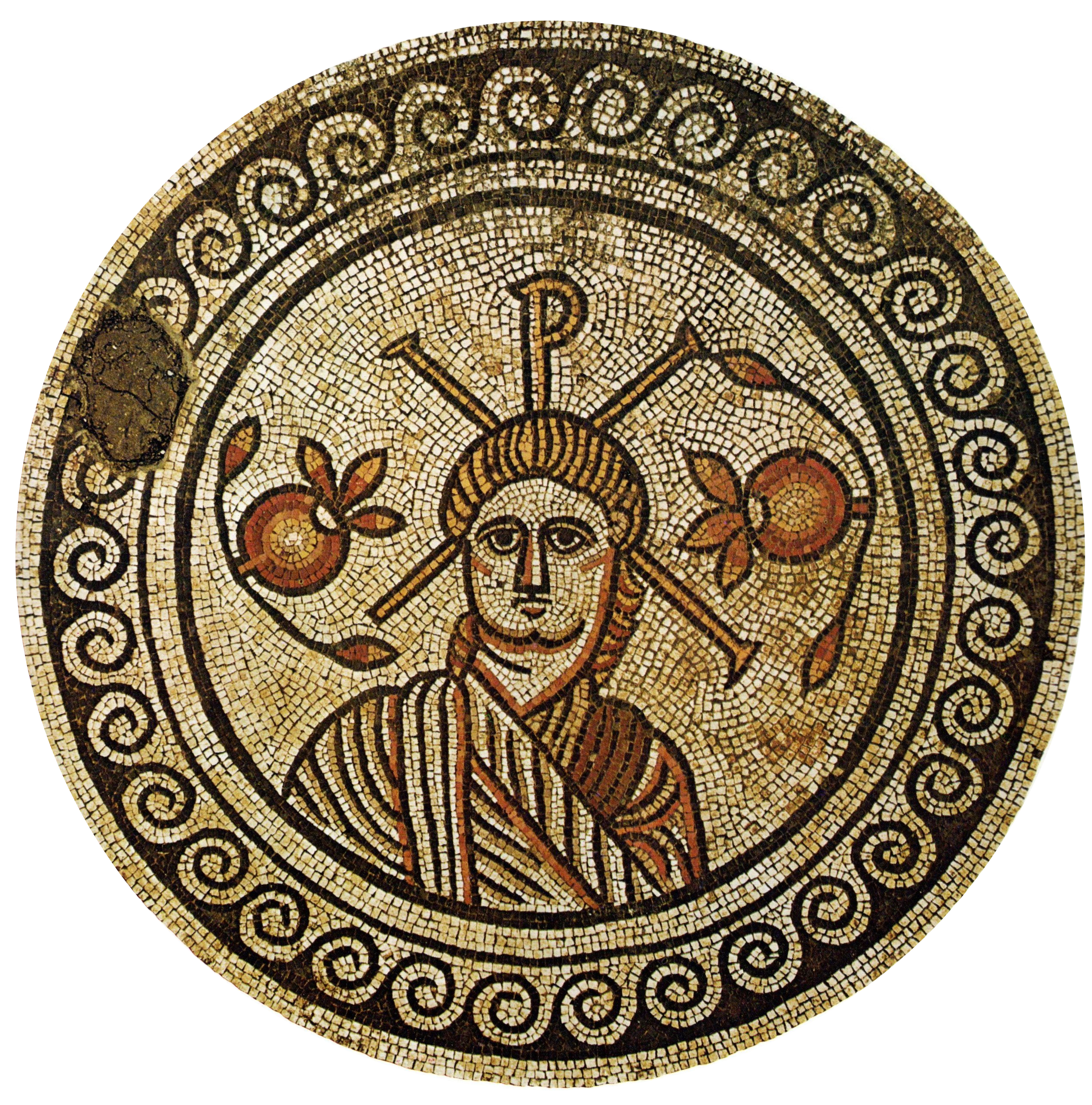LOOK: Christ with Pomegranates (ancient Christian mosaic)

One of the earliest surviving portraits of Christ is in the central roundel of a stone mosaic pavement excavated in the English village of Hinton St. Mary in Dorset, from what was either a Roman villa or a church. It’s part of a larger program of images that covered the floor, which you can see and read about in this Instagram post of mine, and on the British Museum website.
Clean-shaven and wearing a pallium, Christ is crowned with his personal monogram, the chi-rho—the first two letters of the Greek title ΧΡΙΣΤΟΣ, Christos. He is flanked by pomegranates, a symbol of life, fertility, and abundance. In Jewish tradition the pomegranate symbolizes righteousness because it is said to have 613 seeds, corresponding to the 613 mitzvot (commandments) in the Torah. The fruit was woven onto the hems of the robes of the Jewish high priests (Exod. 28:33–34) and is customarily eaten on Rosh Hashanah.
To these symbolic associations, I would add another: sweetness!
[Related post: “So Sweet (Artful Devotion)”]
LISTEN: “Iesu, dulcis memoria” | Words attributed to Bernard of Clairvaux, 12th century (but see notes on authorship) | Music: Medieval chant, harmonized | Performed by Tenth Avenue North, feat. Audrey Assad, on Cathedrals, 2014
On this track Assad sings the first and last stanzas of the traditional five—which are themselves extracted from a poem that was originally forty-two stanzas! The ending sounds abrupt because on the album it moves seamlessly into the next track, “Cathedrals.” For the full song (same tune but without the harmonies), see Angels and Saints at Ephesus by the Benedictines of Mary, Queen of Apostles.
Latin: Jesu, dulcis memoria dans vera cordis gaudia: sed super mel et omnia ejus dulcis praesentia. Nil canitur suavius, nil auditur jucundius, nil cogitatur dulcius, quam Jesus Dei Filius. Jesu, spes paenitentibus, quam pius es petentibus! quam bonus te quaerentibus! sed quid invenientibus? Nec lingua valet dicere, nec littera exprimere: expertus potest credere, quid sit Jesum diligere. Sis, Jesu, nostrum gaudium, qui es futurus praemium: sit nostra in te gloria, per cuncta semper saecula. Amen.
Literal (nonmetrical) English translation: Jesus, sweet remembrance, Granting the heart its true joys, But above honey and all things Is His sweet presence. Nothing more pleasing can be sung, Nothing gladder can be heard, Nothing sweeter can be thought Than Jesus, Son of God. Jesus, hope of the penitent, How merciful you are to those who ask, How good to those who seek; But O, what you are to those who find! Tongue has no power to describe Nor writings to express, But only belief can know by experience What it is to love Jesus. Be our joy, O Jesus, Who will be the prize we win. May all our glory be in you, always And through all ages. Amen. Trans. Mick Swithinbank and Jamie Reid Baxter
Does this sound vaguely familiar? Edward Caswall translated it into metrical English in 1849 as “Jesus, the Very Thought of Thee,” a staple of modern American hymnals:
Jesus, the very thought of Thee
With sweetness fills the breast!
Yet sweeter far Thy face to see
And in Thy Presence rest.No voice can sing, no heart can frame,
Nor can the memory find,
A sweeter sound than Jesus’ Name,
The Savior of mankind.O hope of every contrite heart!
O joy of all the meek!
To those who fall, how kind Thou art!
How good to those who seek!But what to those who find? Ah! this
Nor tongue nor pen can show
The love of Jesus, what it is,
None but His loved ones know.Jesus! our only hope be Thou,
As Thou our prize shalt be;
In Thee be all our glory now,
And through eternity.
Amen.
I commend to you the recording on A Hymn Revival, Volume 3 by The Lower Lights. The tune, from 1866, is by John B. Dykes.
